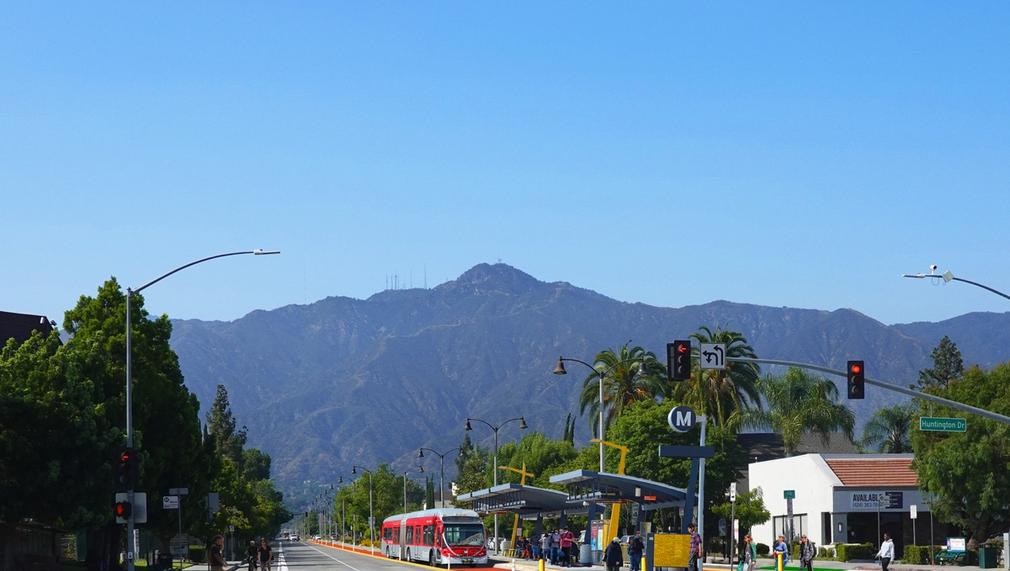HILL TO SEA CORRIDOR
Streets For All is dedicated to making public transit more efficient, reliable, and accessible. We’re working to redesign the Hill to Sea corridor, a 28-mile route traversing 13 cities and a number of unincorporated communities to connect major points of interest in the region and Los Angeles County. It will aggressively reduce car dependency by improving high quality bus service, safe protected bike paths, and improved sidewalks. We’ll collaborate with community members, city officials, and transportation experts to advocate for these changes.

What is the primary issue area that your application will impact?
Public transit
In what stage of innovation is this project, program, or initiative?
Pilot or new project, program, or initiative (testing or implementing a new idea)
What is your understanding of the issue that you are seeking to address?
The San Gabriel Valley and Gateway Cities have some of the worst transit access in LA County. While there are efforts to build ‘spoke’ transit lines connecting the communities to DTLA, there is no effort to connect the communities to themselves. The Hill to Sea corridor envisions a 28 mile north-south connection running down the combined Rosemead/Lakewood Boulevards, getting travelers between Pasadena and Long Beach in around 100 minutes. The route would improve transit between 13 cities, 6 major east-west transit lines, multiple regional parks, medical centers, educational institutions, large commercial and job centers, and the Long Beach Airport. More than 500,000 people live and more than 210,000 people work within a mile of the corridor. A dedicated bus lane can move 5x as many people as a standard traffic lane, improving transit and giving emergency vehicles a path through LA traffic. The project also envisions safe, high quality bike and pedestrian facilities along the route.
Describe the project, program, or initiative this grant will support to address the issue.
Streets For All has organized communities and elected officials in an effort to get the county to improve transportation equity, accessibility, and sustainability across the region. We have created street renderings, a dedicated campaign website, e-mails, and other calls to action to encourage community members to engage with our Hill to Sea corridor initiative. We plan to get all the cities along the corridor to support the initiative, along with the relevant state, federal, and county elected officials to write letters of support, as well as organize meetings to advocate for these changes.
Now is the time to emphasize the importance and advocate for the direly needed improvements and extensions to public and active transportation infrastructure across our region. In this phase of the project, we will host community meetings, present to neighborhood councils, produce new street renderings, and create a video and media campaign to excite people about the proposed improvements.
When we first began this campaign, we urged our audience - both online and in person - to make public comments through official channels. We will continue this work with a two-pronged approach: 1) working directly with constituents to build overwhelming and widespread community support, and 2) effectively advocating to key decision-makers.
Describe how Los Angeles County will be different if your work is successful.
Los Angeles continues to have some of the worst air quality, worst traffic, highest rates of childhood asthma, and least safe streets in the country. It’s vital that we continue to expand reliable transportation solutions that allow people to choose to get around safely outside of their car.
In the short term we hope to: Build community power along the Hill to Sea Corridor Gain letters of support from all local government leaders (13 Cities, 2 Supervisor Districts)
Begin funding this project by advocating for Metro to support improvements across the corridor. This initiative will accomplish Metro’s overall goal of traffic reduction and improving regional mobility, without inducing more car trips or harming the air quality in nearby communities. In the long term, we hope that our advocacy can push and accelerate this project through environmental, engineering, and eventually construction to help hundreds of thousands of people move more safely and efficiently across LA County.
What evidence do you have that this project, program, or initiative is or will be successful, and how will you define and measure success?
We will measure our success by the number of stakeholders - including individuals, elected officials, local leaders, small businesses, institutions, and more - in each of the regions within the corridor who sign on to the project. Through support letters, coalition sign-offs, and local agreements, as well as engagement at virtual and in-person pop-ups and events - we can measure how effective our outreach efforts have been. Our goal is to reach stakeholders in this under-served corridor with options for a better transit future.
We are well-suited to execute this project and are prepared for success because we have strong in-roads and relationships with community members and local leaders in the neighborhoods and cities we need to reach in order to implement changes and improvements across this corridor. Streets For All also has a track record of success with similar projects including Venice Boulevard For All and Measure HLA.
Approximately how many people will be impacted by this project, program, or initiative?
Direct Impact: 1,000.0
Indirect Impact: 500,000.0